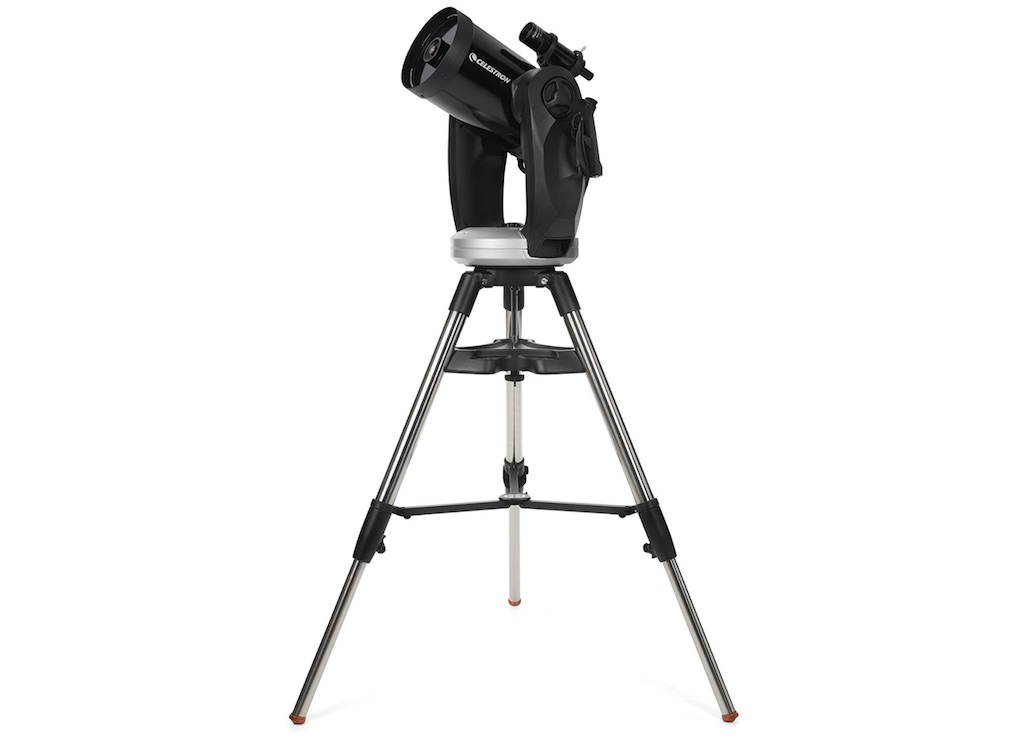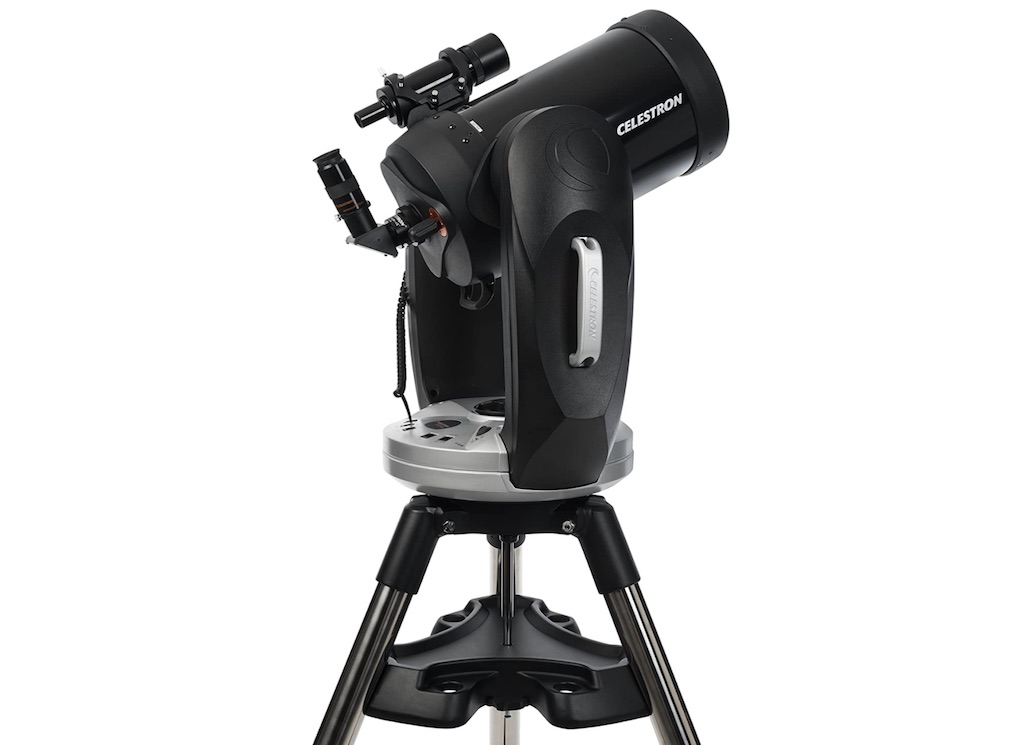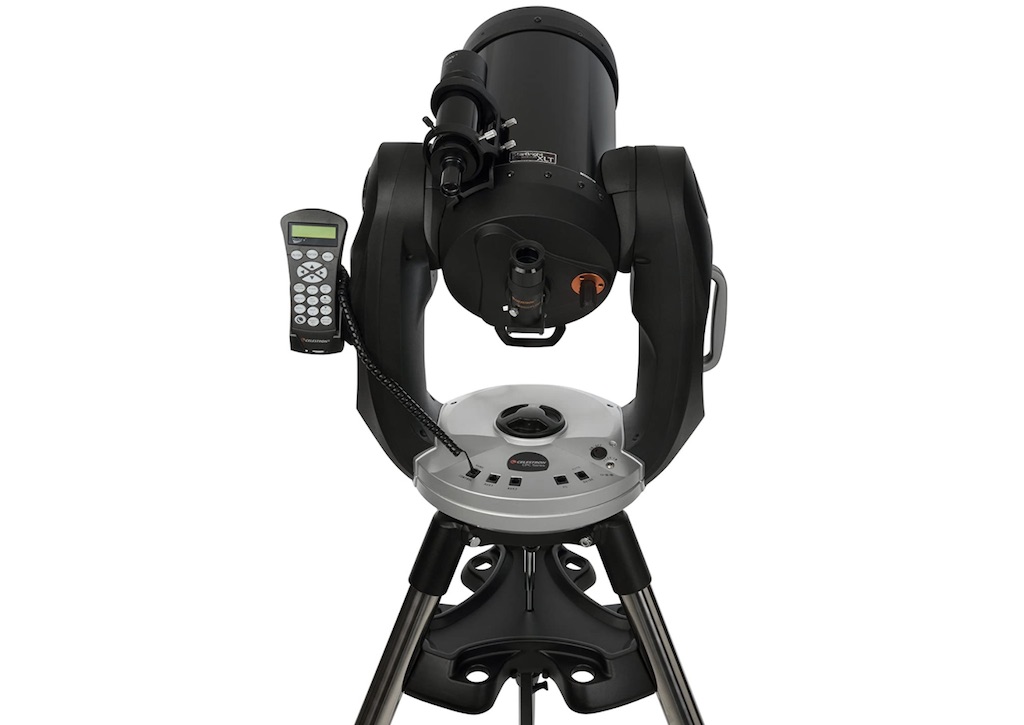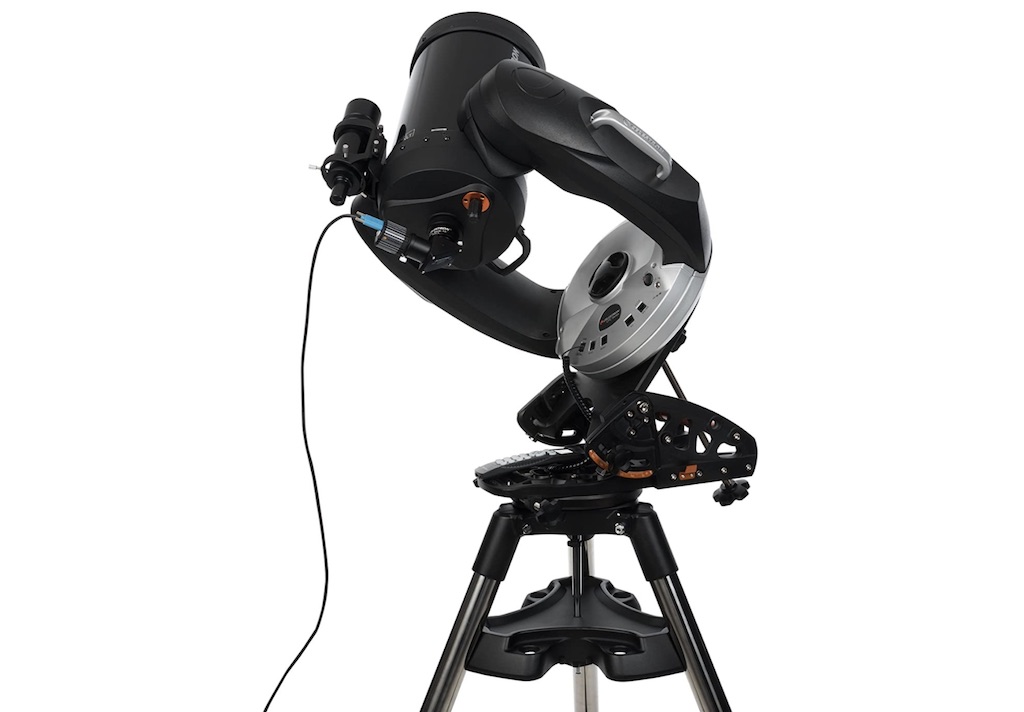Space Verdict
A beautifully finished and constructed telescope, the Celestron CPC 800 GPS proved to be an impressive piece of kit during our tours of the night sky. A huge positive is the clear and crisp sights of a variety of targets within the solar system and into deep space, making it an all-rounder for skywatchers who like to dabble in observing a mixtures of galaxies, nebulae, stars, the lunar surface and the planets. The alignment process is impressively simple and, overall, this computerized telescope is a breeze to assemble and use. A couple of minor downsides are the stiff focuser and the instrument's total weight limiting the portability but given the breathtaking sights, which lacked any kind of optical defects, the CPC 800 GPS is a must for serious skywatchers.
Pros
- +
Simple to set up
- +
Superb multi-coated optics
- +
High-definition observations
- +
Silent motors with minimal shaking
- +
Easy alignment process
Cons
- -
Very heavy, lacks portability
- -
Slight stiff focuser
Why you can trust Space.com
With the Celestron CPC 800 GPS, you certainly get what you pay for. An incredibly well-made instrument, this beautifully presented and robust telescope is ideal for those looking to upgrade with an all-rounder that also allows for some serious astrophotography.
The CPC 800 GPS is supplied with essential accessories, including a 9x50 optical finderscope with quick-release bracket, a handset for navigation, accessory tray, 40 mm high-quality eyepiece and a 1.25-inch star diagonal. Celestron's Starry Night Special Edition software is also included.
Being a highly revolutionary instrument, the telescope features its own internal Global Positioning System (GPS) that automatically works out the date, time, longitude and latitude of your observing location without any input from the user. Alignment of the telescope is achieved at the press of a button and using Celestron's SkyAlign technology.
Related: Best telescopes
Optical design: Schmidt-Cassegrain
Aperture: 203.2 mm (8")
Focal length: 2032 mm (80")
Focal ratio: f/10
Eyepiece 1 focal length: 40 mm (51x)
Total kit weight: 61 lbs. (27.6 kg)
Mount type: Computerized alt-azimuth dual fork arm
CPC 800 GPS: Design
- Superior overall quality
- Very heavy, lacks portability
- Simple to build
- Starbright XLT coating
The Celestron CPC 800 GPS may look daunting to build, however, Celestron has provided in-depth instructions for fuss-free construction, leaving the skywatcher fully guided through the process.
On setting up the telescope, it's hard not to note the superb quality of the tube, tripod and mount, fashioned from long-lasting aluminum, steel and thick plastic. Peering into the objective lens, a coating of StarBright XLT is evenly spread across the full 8 inches (203.2 mm).
The telescope will take more than a few minutes to set up, compared to our experiences with the Celestron NexStar 6SE and Astro Fi 130, but this is to be expected — especially if you have never put a computerized instrument together before. However, on the whole, we do think that the general set up is intuitive thanks to the excellent design and supplied Celestron support.
Breaking space news, the latest updates on rocket launches, skywatching events and more!
With the massive amount of rain we experienced throughout January, we waited quite some time for a sufficiently clear night to test the CPC 800 GPS’ mettle on a variety of targets. We were rewarded for our patience and were eventually able to position the telescope under a clear dark sky at the end of the month.
As expected — and since it is comprised partly of steel — the CPC 800 GPS is very heavy, weighing in at 61 lbs. (27.6 kilograms). While the fork mount makes lifting the telescope a touch easier compared to its single-arm cousins, we recommend getting someone to help you to carry it to your chosen observing site or transporting it in a vehicle. For just transporting the tube, a handy carry handle has been built in.
While it’s quite easy to see the heftiness as a negative, many — if not all — skywatchers will be thankful of such a robust build: even with a prevalent icy breeze, the telescope stands impressively still. A CCD camera was also attached, with the CPC 800 GPS supporting the additional weight well.
The Celestron CPC 800 GPS operates on nine slewing speeds, with the fastest speed being 5 degrees per second, tracking rates are in sidereal, solar and lunar and the supplied NexStar database features over 40,000 objects.





CPC 800 GPS: First light and functionality
- Smooth alignment process
- Quiet motors with minimal vibration
- StarBright XLT coating provides bright and clear views
- Offers superb views of the solar system and deep sky
With the constellations of Ursa Major (the Great Bear), Leo (the Lion), Virgo (the Virgin) and Ursa Minor (the Little Bear) in the sky, we were excited to view their many deep-sky treasures using the 8-inch (203.2 mm) aperture of the CPC 800 GPS.
Before we could tour the night sky, we needed to align the telescope with the SkyAlign technology. We couldn’t have been more impressed with this feature — simply pick three bright objects in the sky (these can be the moon, planets or stars) and the CPC 800 GPS' computer system does the work for you.
We took the opportunity to test how quickly the telescope's GPS is able to work out our location on a variety of observing trips beyond the backyard. We can confirm that this is a reliable feature of the CPC 800 GPS and it took no more than a few minutes for the system to compute our position. Users should also bear in mind that the telescope will need to be set to daylight saving at appropriate times of the year.
The computerized mount operates flawlessly and is incredibly easy to use. Pressing the NexStar handset, we instructed the CPC 800 GPS to slew to Bode's Galaxy (Messier 81) in the constellation of Ursa Major and noted that the telescope’s DC servo motors are impressively quiet. There wasn't too much shaking of the tripod as the fork-mount turned the optical tube toward the spiral galaxy.
Plugging the supplied 40 mm eyepiece into the finder, we received an impressively clear view of Messier 81, with the CPC 800 GPS revealing a moderately sized bright oval. The galaxy's stunning spiral arms and detail got better and better the more we experimented with our selection of eyepieces and filters.

Bringing our target into clear view, the focus knob does not operate as smoothly as we would have liked but does the job nonetheless. Meanwhile, the star diagonal is well-orientated, allowing for comfortable views for long periods of time.
We waited until the early hours of the morning for the Pinwheel Galaxy (Messier 101) to become visible above the horizon. We are impressed with the sight of this stunning face-on spiral, where views of the knots of star formation and central bulge are improved with the help of a deep-sky filter.
It wouldn’t be an observing session without locating members of our solar system and Jupiter was a stunning sight at magnitude -1.7 through the Celestron CPC 800 GPS during the small hours of the morning.
Using the 40 mm eyepiece, the gas giant appeared as a small but crystal clear disk with its Galilean moons — Io, Europa, Ganymede and Callisto — showing up as points of light either side of its limbs. Allowing our eyes to adjust to the view of the planetary king, we could make out its atmospheric belts and bands, while some of the planet's cream-colored zones shone with a bright white. No color fringing can be seen through the telescope's optical system.
We waited until the following evening to catch Mars, which at the time could be found low in the south-east and in the constellation of Ophiuchus (the Serpent Bearer). The planet was glowing at magnitude +1.6.
Locating the planet with the CPC 800 GPS' database was nothing short of a breeze and, within seconds, it appeared at the center of our field of view as an orange disk. Valles Marineris, the canyon system that stretches across Mars' equator, could be seen as a dark "shadow". An impressive sight for all levels of skywatcher, whether you're a beginner or seasoned observer.
CPC 800 GPS: Verdict
While the Celestron CPC 800 GPS is considered to be an expensive piece of kit we have to say that, given the instrument’s build, operation and the revolutionary technology offered, it is worth every cent.
It's built to last, offering a reliable computerized mount and is a great investment for those hunting for an upgrade. The CPC 800 GPS is an all-rounder for visual observing and astrophotography. Minor downsides are the telescope's weight and a slightly stiff focuser.
Views of the solar system and deep-sky objects are exceedingly sharp and clear, with the optical system displaying no signs of distortion or defects. As with all telescopes, we recommend furnishing the CPC 800 GPS with further accessories to get the very best out of it — views become even more pleasing the more the skywatcher experiments with magnifications and filters.

Gemma currently works for the European Space Agency on content, communications and outreach, and was formerly the content director of Space.com, Live Science, science and space magazines How It Works and All About Space, history magazines All About History and History of War as well as Science, Technology, Engineering, Arts and Mathematics (STEAM) kids education brand Future Genius. She is the author of several books including "Quantum Physics in Minutes", "Haynes Owners’ Workshop Manual to the Large Hadron Collider" and "Haynes Owners’ Workshop Manual to the Milky Way". She holds a degree in physical sciences, a Master’s in astrophysics and a PhD in computational astrophysics. She was elected as a fellow of the Royal Astronomical Society in 2011. Previously, she worked for Nature's journal, Scientific Reports, and created scientific industry reports for the Institute of Physics and the British Antarctic Survey. She has covered stories and features for publications such as Physics World, Astronomy Now and Astrobiology Magazine.
